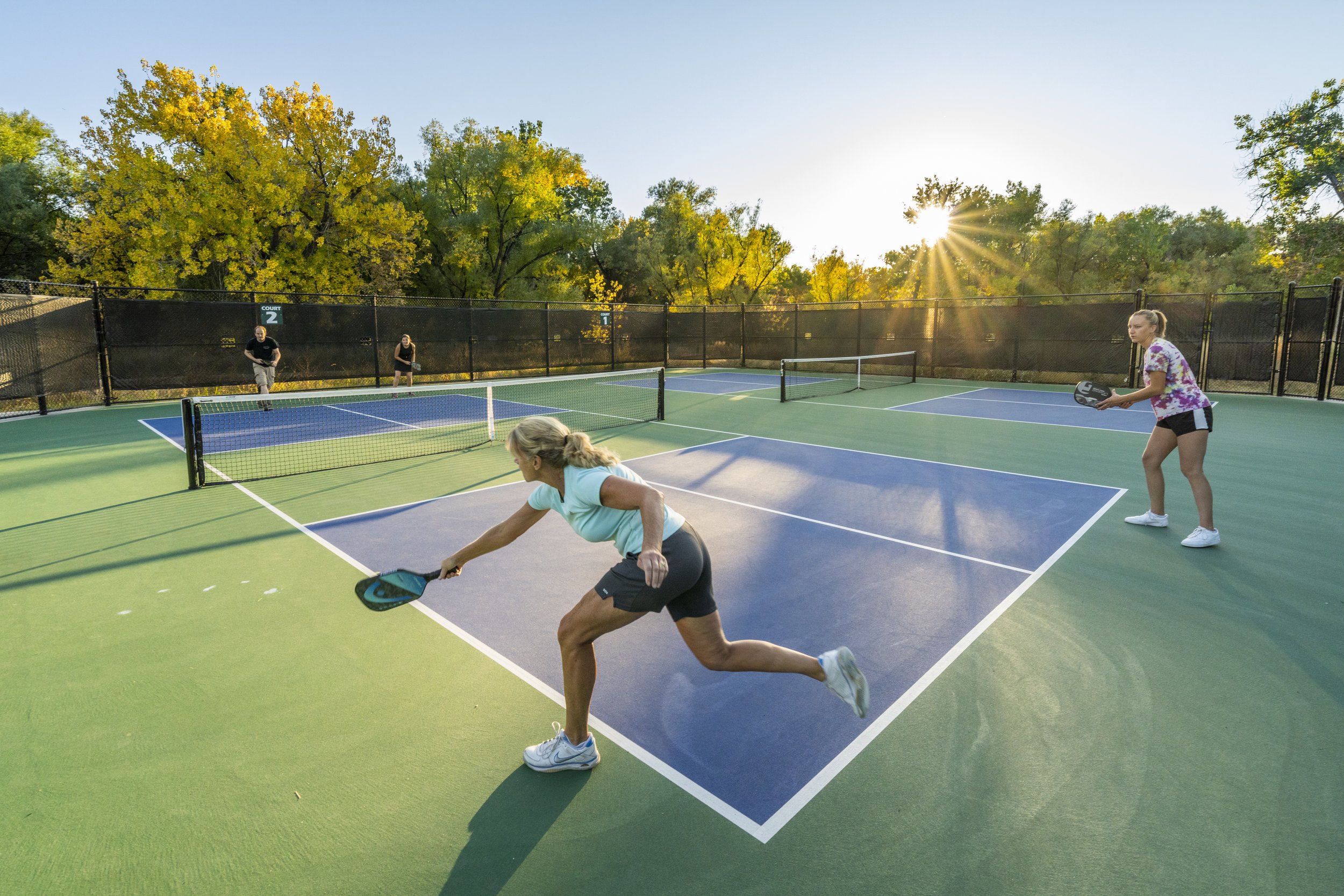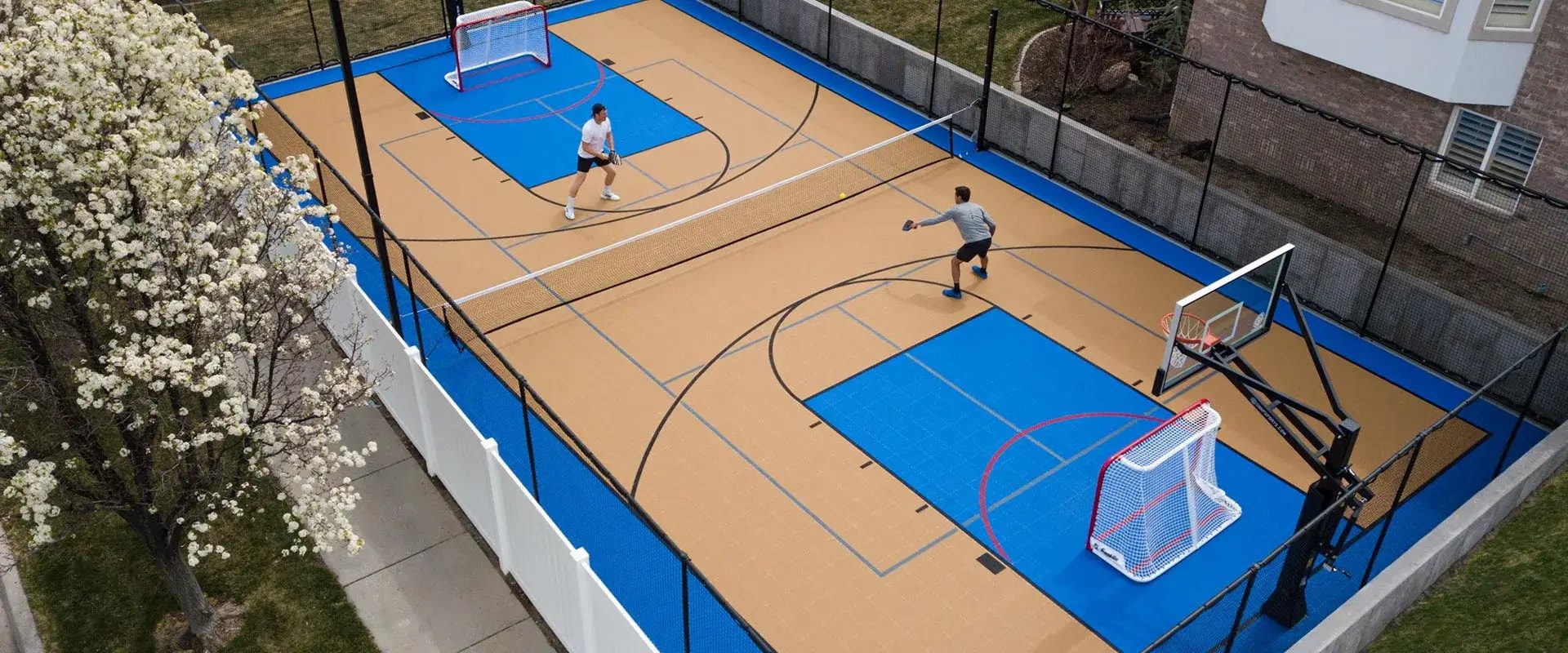Top Pickleball Courts Layout & Building Solutions in Illinois and Midwest
Top Pickleball Courts Layout & Building Solutions in Illinois and Midwest
Blog Article
Trick Factors in the Building And Construction of Pickleball Judiciaries: From Website Option to Final Finishes
The construction of pickleball courts incorporates a series of important elements, beginning with the option of a suitable website that balances accessibility with ecological considerations. Essential aspects such as court measurements, surface products, and drainage systems dramatically impact not only the high quality of play yet also the durability of the facility. Interest to illumination and ending up touches can raise the total experience for players and viewers alike. Comprehending just how each of these components interrelates may expose understandings that are commonly ignored, prompting a more detailed examination of ideal techniques in court construction.
Website Option Criteria
When getting started on the building of pickleball courts, it is important to pin down the site selection standards that will ensure optimum playability and ease of access. The area should be conveniently obtainable for players, preferably located near houses or recreation center, to encourage participation.
In addition, the surface should be level and steady, as irregular ground can result in safety and security threats and impact gameplay. Adequate water drainage is also vital; choosing a site with excellent water overflow will certainly assist preserve court problems throughout negative climate.
An additional important consideration is the availability of energies. Accessibility to electrical power and water is required for lighting and upkeep functions. Furthermore, distance to vehicle parking centers is essential, promoting easy accessibility for players and spectators alike.
Environmental elements can not be ignored; all-natural color from trees can improve gamer convenience, while direct exposure to dominating winds may interfere with play. Lastly, zoning regulations and area support ought to be taken into consideration to guarantee that the project lines up with regional guidelines and obtains the support it requires for successful implementation. By carefully assessing these requirements, stakeholders can produce an inviting and practical setting for pickleball lovers.
Court Capacities and Layout
To make certain optimal gameplay and adherence to guidelines, the measurements and format of pickleball courts should be meticulously defined. A standard pickleball court determines 20 feet in size and 44 feet in length for both singles and doubles play. The suggested format consists of a non-volley area, frequently referred to as the "kitchen area," prolonging 7 feet from the net on either side. This area is critical, as it influences gamer positioning and shot choice - Illinois and midwest.
The web height is evaluated 36 inches at the sidelines and 34 inches at the facility, producing a slight dip that affects round trajectory. Court markings are similarly vital; lines need to be 2 inches wide and distinctive in color to make certain exposure.
Furthermore, a buffer zone bordering the court is suggested, typically expanding 5 to 10 feet past the sidelines and baselines to fit gamers' activities and enhance security. Correct design and dimensions not only make certain conformity with official guidelines yet also enhance the overall having fun experience, accommodating both recreational and affordable play. Cautious preparation in these locations is paramount to the successful building and construction of pickleball courts.
Surface Product Options
Picking the appropriate surface material for pickleball courts is critical for guaranteeing optimal gamer performance and safety and security. The option of surface area can significantly impact gameplay, including ball bounce, grip, and gamer convenience.
There are a number of options offered, each with its distinct qualities. Asphalt is a popular selection due to its resilience and low maintenance demands. our website It gives a strong having fun surface that can endure various weather yet may call for routine resurfacing.
Concrete is an additional extensively used material, providing superb durability and a smooth surface. It allows for constant round bounce yet can be difficult on players' joints, making it less desirable for long-term play without appropriate padding.
For those looking for enhanced convenience and shock absorption, cushioned acrylic surfaces provide a sensible option. These surfaces incorporate a base layer with an acrylic overcoat, offering boosted grip and a softer feeling, which is advantageous for lowering the danger of injuries.
Last but not least, artificial lawn is obtaining grip, particularly for multi-purpose centers. Its convenience and lower upkeep requires make it an appealing alternative, though it may not supply the same ball reaction as typical hard courts. Mindful factor to consider of these choices will certainly ensure an optimum having fun environment.
Drainage and Lighting Factors To Consider
Correct drainage and effective illumination are necessary components in the building and construction of pickleball courts, substantially affecting both playability and safety and security. Sufficient drainage systems protect against water build-up, which can cause unsafe surface areas and damages to the court framework. A properly designed water drainage strategy includes sloped surfaces and appropriate products to promote water move far from the playing area - Illinois blog here and midwest. This not only maintains the honesty of the court yet likewise decreases downtime because of bad weather.
Lighting is just as crucial, particularly for courts planned for night usage. The placement of lights fixtures must be purposefully intended to eliminate shadows and supply even circulation of light across the court.

Final Surfaces and Upkeep
After dealing with drain and lighting considerations, focus transforms to the last surfaces and recurring upkeep of pickleball courts. Illinois and midwest. The choice of surface material is important, as it impacts both playability and longevity. Common options consist of acrylic finishes and specialized sporting activities surfaces that offer ideal grip and padding. These finishes must be applied in numerous layers to make certain durability against weather condition aspects and wear.

Seasonal maintenance may include resurfacing every few years, depending upon usage and environmental elements. Properly maintaining internet, court lines, and surrounding locations you can try these out is just as vital to provide a risk-free and pleasurable playing experience. By spending in high quality coatings and sticking to a structured maintenance routine, facility proprietors can guarantee their pickleball courts remain in excellent condition for several years to come.
Conclusion
In final thought, the successful building and construction of pickleball courts pivots on careful interest to several essential elements. Top quality surfaces and a durable maintenance timetable are vital for protecting the court's condition, improving the general experience for gamers and viewers alike.
Report this page